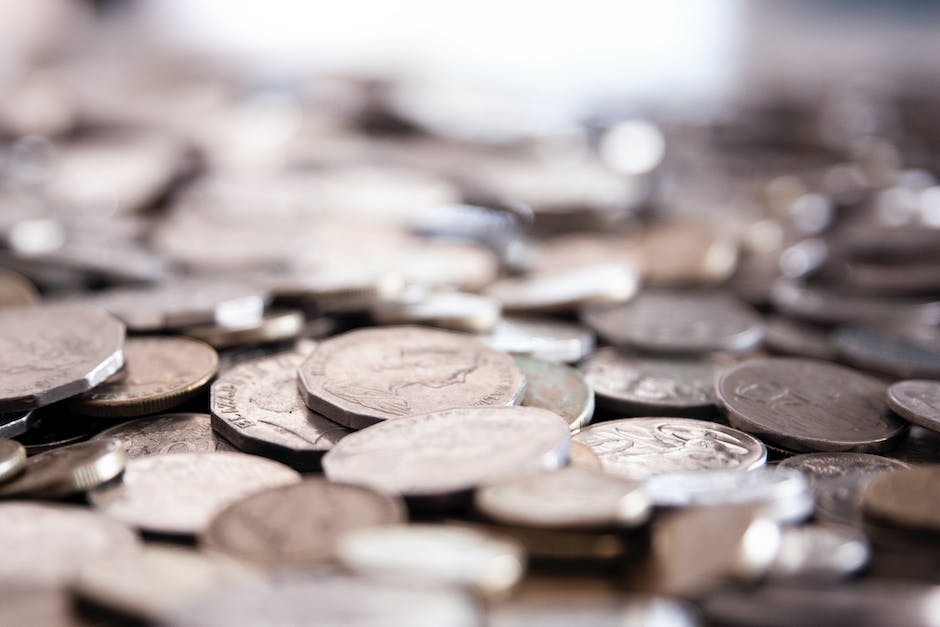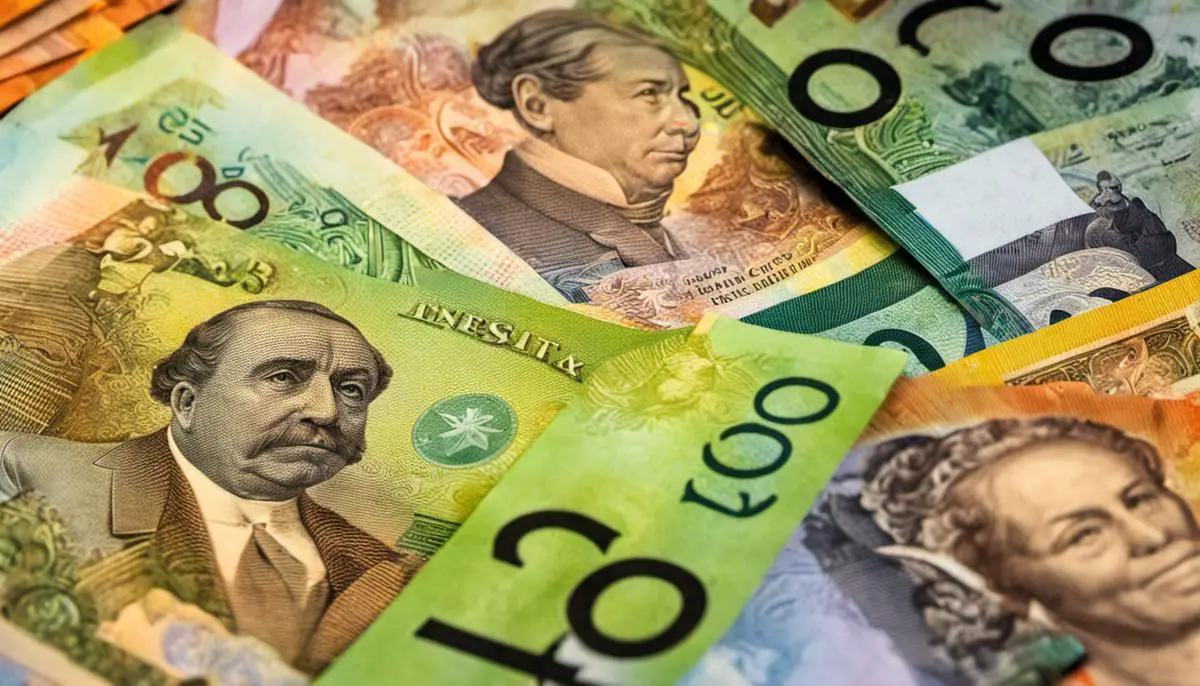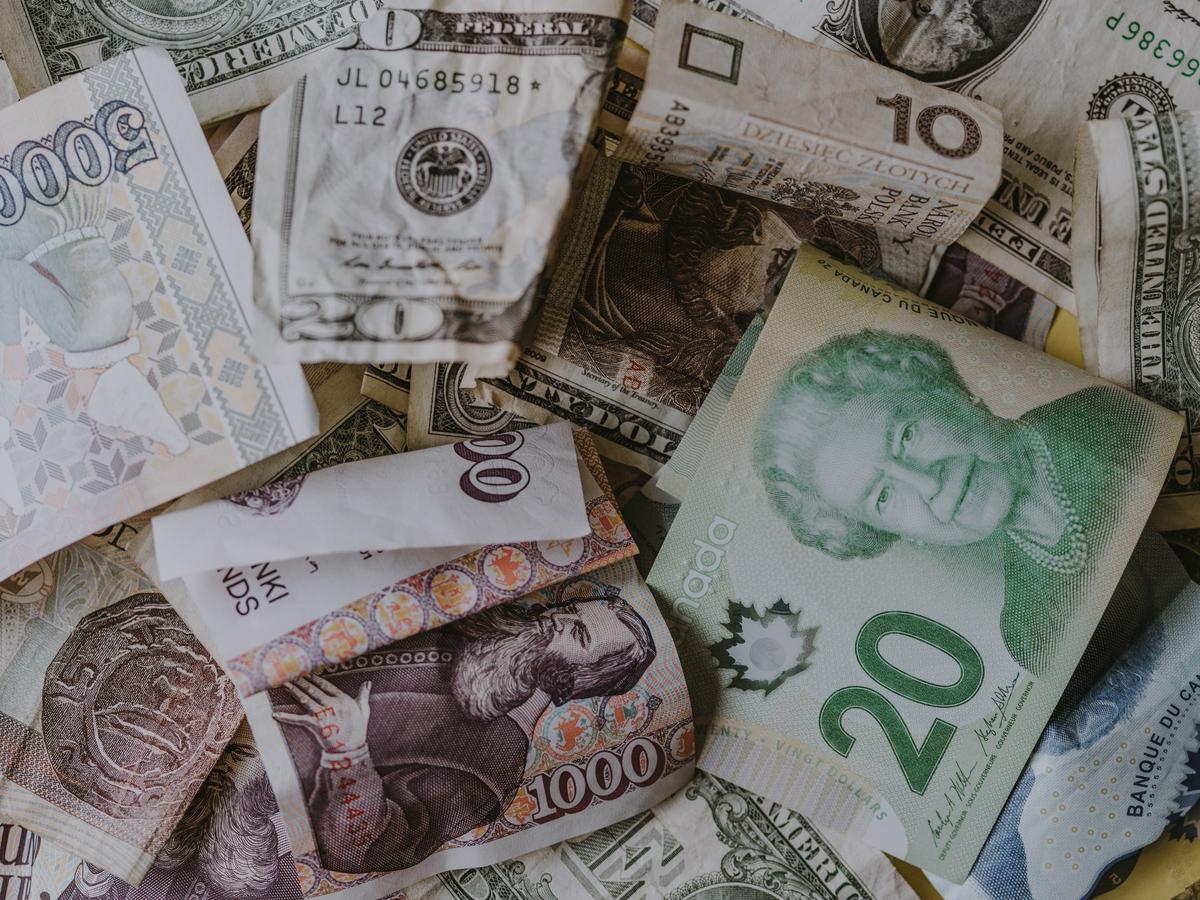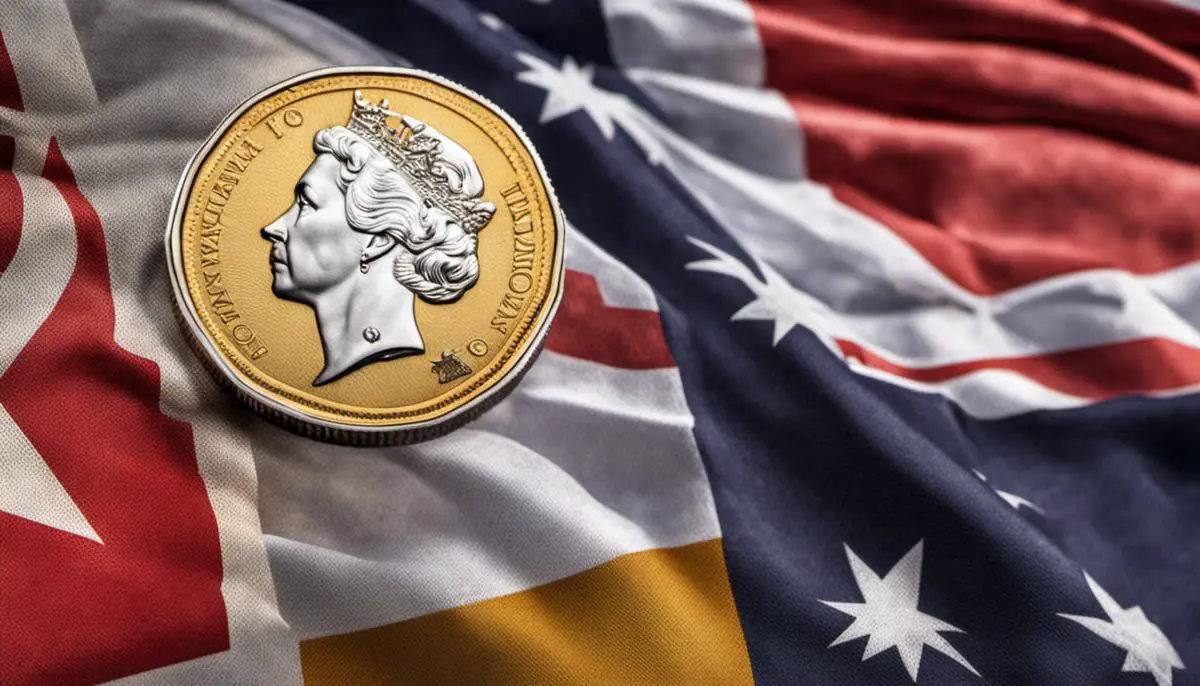When you hold an Australian dollar or cent in your hand, you’re interacting with millions of years of economic tradition, influenced by indigenous customs, European colonization, technological innovations and recent global trends. Australia’s unique currency journey, which began long before the minting of coins and printing of paper money, provides an intriguing perspective on the country’s historic and cultural evolution. This review delves into the indigenous roots of trade, chronicles the switch from pounds to dollars and the introduction of decimal currency. Furthermore, it sheds light on Australia’s pioneering role in the advent of polymer banknotes, before contemplating the modern implications and potential future of the Australian currency.
Early Forms of Australian Currency
Earliest Forms of Currency in Australia
The Indigenous peoples of Australia did not use a formal system of currency like we know today. Instead, they engaged in trade using a wide range of goods that held traditional and cultural significance. These goods included pearl shell, quartz crystals, food, animal pelts, and even weapons such as spears and boomerangs. This system was largely based on reciprocity and mutual obligation, with trade relationships often serving to forge and maintain social connections between different groups.
Colonial Era and the Introduction of Coins
Currency, in a form familiar to modern users, was first introduced to Australia with the arrival of European settlers in 1788. The First Fleet, a group of ships sent by the British to establish a penal colony, brought with them British currency, which included pounds, shillings, and pence. However, due to the distance from England, a currency shortage was a common issue in the early colony. As a result, settlers often had to resort to barter or the use of promissory notes.
By 1800, foreign coins, including Spanish dollars, were being used alongside British currency. In response to the continued shortage, Governor Lachlan Macquarie took the step of buying Spanish dollars, slicing out the center and creating two new coins – the Holey Dollar and the Dump, to circulate in the colony. This convoluted system of currency was not replaced until 1825, when sterling coinage was finally introduced.
From Gold Rush to Banknotes
The discovery of gold in Australia in the 1850s led to significant changes in the nation’s currency. The gold rush brought a wave of immigrants and wealth into the country, leading to a boost in the economy. Major banks, such as the Bank of New South Wales and the Bank of Australasia, began to issue their own banknotes, effectively operating as a form of currency.
The Australian colonies agreed on a uniform gold sovereign coin in 1855, creating stability and simplifying trade. However, it wasn’t until 1910 that Australia issued its first nationally circulated coins, the Australian Pound, Shilling and Pence.
Transition to Decimal Currency
The year 1966 marked a major milestone in the history of Australian currency with the introduction of the decimal system. The Australian pound was replaced by the Australian Dollar and smaller cent denominations. The change was implemented to simplify calculations and ease transactions, a step towards modernizing the economy.
The adoption of the decimal system also brought about the introduction of new coin designs. These designs paid tribute to Australian wildlife and culture, with animals such as the kangaroo, platypus, and echidna making appearances.
Current Australian Currency
Having undergone a transition to a decimal structure, the Australian monetary system has persistently improved. In a pioneering move, the Reserve Bank of Australia began issuing plastic or polymer banknotes in 1988. This significantly increased the durability of currency and provided protection against counterfeiting. Recognizable Australian figures and landmarks are featured in the designs, thus reinforcing the currency’s distinctively Australian identity.
With the advent of the technological era, electronic transactions have grown notably. Despite this, cash continues to hold significant value in the Australian economy, signifying its rich heritage and consistently serving as a concrete representation of its vast cultural diversity.

Transition from Pounds to Dollars
The Australian Pound: A Historical Perspective
Prior to the Australian dollar’s adoption, the Australian pound served as the nation’s official currency. Established in 1910, the Australian pound mirrored the British pound, acknowledging Australia’s status as a British colony. This monetary unit was fractioned into 20 shillings, each comprising of 12 pence. Despite its traditionalist nature, the complexity of this system provoked the need for decimalization and independence from the British-derived currency systems.
The Decimalization Debate
From the 1930s onwards, discussions about decimalization started gaining momentum. The primary motivation was the ease of conversion and calculations in base-10 system that matched the metrics in measurement and weight already introduced in the country. Critics pointed to the confusion and inefficiency caused by the pounds, shillings, and pence system – with its odd multiples, and argued that decimalization would simplify monetary transactions.
The Hesitation and Final Decision
Although the Royal Commission’s 1937 report supported a move to decimal currency, political distractions, and World War II delayed the implementation of this transition. It was not until the early 1960s that the matter was taken up seriously again by the government led by Prime Minister Robert Menzies. In 1963, the decision was officially made to convert the Australian currency into a decimal form.
The New Australian Dollar
On the 14th of February 1966, the Australian dollar was introduced, replacing the Australian pound. The new currency was divided into 100 cents, and coins were issued in denominations of 1, 2, 5, 10, 20, and 50 cents, and notes in denominations of $1, $2, $10, and $20. The designs for the new coins and notes were chosen through public competition, reflecting a uniquely Australian identity.
Public Response and Immediate Impacts
The switch to the Australian dollar met with overwhelming public support. The government had gone to great lengths to ensure a smooth transition, launching massive public information campaigns, including the now iconic ‘Dollar Bill’ character in television commercials and school visits. Immediately after the switch to the dollar, the Australian economy underwent a period of rapid growth. The ease of calculation contributed to improved economic efficiency. Additionally, the new currency helped further establish Australia’s national identity, marking its financial independence from the UK.
Evolution and Impact of Australian Currency
The Australian dollar has gone through numerous transformations over the years to adapt to contemporary financial requirements. These include the introduction of polymer banknotes, which advanced their durability and enhanced their security features. Now, it proudly stands among the top five most traded currencies in the world, underscoring the resounding success of the switch in 1966. The transition from the Australian pound to the Australian dollar marked a significant leap towards modernisation and economic autonomy for this nation.

Introduction of Decimal Currency
Shifting to a Decimal Currency
To prepare for decimalisation, a monumental endeavour was set into motion in Australia during the early 1960s. The Decimal Currency Act of 1965 was legislated to aid the transformation to a decimal currency system. This fundamentally led to the introduction of a new currency, superseding the conventional pounds, shillings, and pence system that had been in operation since Australia’s settlement by the British in the 18th century.
Reasons for Decimalization
The principle behind the decimalization was to simplify monetary calculations and enhance economic efficiency. Under the pre-decimal currency system, there were 20 shillings in a pound and 12 pence in a shilling, which was cumbersome and confusing. The change to a decimal currency was deemed necessary to streamline monetary transactions and increase economic activity. This move was also intended to align Australia’s currency system with other countries that already adopted the decimal currency system, such as the United States and New Zealand.
Implementation of the New System
The transition to decimal currency occurred on 14th February 1966, famously known as ‘C-Day’. The new monetary system was based on the Australian dollar, with one dollar equal to 100 cents. This new currency came in the form of coins and notes. The initial denominations introduced were the one cent, two cents, five cents, ten cents, twenty cents, fifty cents, one dollar, and two dollars. All pre-existing currency was demonetized.
Impact on the Australian Financial Landscape
The introduction of decimal currency revolutionized the Australian financial landscape. Decimal currency simplified banking systems, making it easier to automate financial processes and transactions. For merchants and consumers, the decimal currency made pricing goods and services more straightforward. This boosted commerce and contributed to overall economic growth in Australia.
The changes also sparked interest in coin collecting, with new designs and denominations. In education, the decimal system was incorporated into teaching mathematics, giving scholars the added benefit of understanding both the Imperial and metric systems.
International Influence
Over the years, the Australian dollar has solidified its position as one of the most internationally traded currencies. Its distinctive design featuring noted Australian figures has also garnered global acclaim. Various versions of the banknotes have showcased prominent Australians from diverse fields who have made substantial contributions to the nation’s development. Notable figures such as Dame Mary Gilmore, David Unaipon, and Edith Cowan, among others, have been commemorated on these banknotes.
By transitioning to a decimal currency, Australia aligned itself with international monetary standards, facilitating smoother trade and financial operations with countries utilizing similar systems. This strategic move played a major role in fueling Australia’s ongoing economic expansion.

Introduction of Polymer Banknotes
Innovation: Polymer Banknote Pioneering
In a world-first, Australia led the way in the introduction of polymer banknotes. The drive towards a durable, plastic currency in Australia was set in motion as early as 1968. The Reserve Bank of Australia (RBA) began to investigate emerging technologies to thwart counterfeiting attempts. This pursuit saw the RBA collaborating with the Commonwealth Scientific and Industrial Research Organisation (CSIRO) to identify favorable alternatives to the conventional paper notes. Their collective efforts culminated in the creation of a polymer substrate that formed the foundation for the new class of banknotes.
Why Australia Led the Change
With polymer banknotes, Australia found a way to significantly upgrade its banknotes’ durability and security. The country was keen on ensuring their currency was secure against forgery, a constant threat for all world currencies. These plastic notes were highly resistant to counterfeiting due to their complex layers of security features such as holograms, transparent windows, and hidden images that were difficult to replicate accurately.
Challenges During Implementation
The implementation of polymer banknotes wasn’t without its challenges. Manufacturing facilities needed costly upgrades to handle the production of polymer notes, and early versions of the notes had a tendency to stick together. The new notes were also initially rejected by some machines that were designed to handle paper notes, such as vending machines and automated teller machines (ATMs). As a solution, numerous machines across the country had to be recalibrated to accept the new notes.
Benefits
Polymer notes have many benefits over traditional paper notes. They are waterproof, more durable, and have a longer lifespan than paper notes. The RBA reported that polymer notes last at least four times longer than their paper counterparts, resulting in cost savings over time, despite their higher production cost. In addition, polymer banknotes are more environmentally friendly. As they last longer, they need to be replaced less frequently, thus reducing waste.
Global Recognition
Australia’s innovative step in introducing polymer banknotes was widely acclaimed. Their pursuit of this advanced form of currency soon influenced other countries, leading over 30 countries to adopt this advancement. Countries such as Canada, United Kingdom, and Vietnam either completely transitioned to polymer banknotes or incorporated them alongside traditional paper notes. This novel approach by Australia has resulted in a transformative shift in worldwide money production and usage, exhibiting its impact in both national and global banking and counterfeit prevention.

Photo by anniespratt on Unsplash
Modern Developments and Future of Australian Currency
The Present Scenario of Australian Currency
Presently, the Australian Dollar (AUD) falls among the standard currencies on the foreign exchange (forex) market, standing with other significant world currencies – US Dollar, Euro, British Pound, Swiss Franc, and Japanese Yen. The AUD is generally regarded as a consistent and reliable currency, though, its value somewhat hinges on commodity prices, including large exports of iron ore and coal from Australia. Due to Australia’s geopolitical proximity to Asia, specifically China, the AUD’s value is substantially driven by economic shifts or fluctuations in these regions.
Recent Changes and Fluctuations in the Value of the AUD
Recently, the AUD has experienced volatility due to various factors, including global geopolitical tensions, shifts in commodity prices, and changes in the interest rate policies of the Reserve Bank of Australia (RBA). These factors, combined with the uncertainty brought about by the ongoing global pandemic, have caused fluctuations in the AUD’s value against other currencies.
Role of the Reserve Bank of Australia (RBA)
The Reserve Bank of Australia plays a significant role in managing the Australian dollar value. Its monetary policy decisions, including those related to interest rates and inflation targeting, directly influence the AUD. For instance, higher interest rates can attract foreign investors looking for better returns, thereby strengthening the AUD. Conversely, lower interest rates can lead to capital outflow, weakening the AUD.
Prospects and Speculations for the Future of the Currency
Looking forward, financial analysts and economists have varying views about the future trajectory of the AUD. Some believe that strong commodity prices and the recovery of the global economy could bolster the AUD. Others, however, warn of potential headwinds, such as a slowing Chinese economy and changes in global interest rate dynamics.
Digital and Cryptocurrency Advancements in Australia
In recent years, both the Australian government and the RBA have expressed interest in digital and cryptocurrency advancements. The RBA has established a working group to explore the potential for a Central Bank Digital Currency (CBDC), which would serve as an electronic form of Australian dollars. It’s intended to coexist with physical cash and bank deposits rather than replace them.
In addition to CBDCs, other forms of digital currency, such as Bitcoin and Ethereum, are gaining popularity in Australia. However, regulatory, technical, and societal challenges remain before they can be fully embraced and integrated into the mainstream financial system.
In conclusion, the evolution of the Australian dollar offers fascinating insights into the economic, political, and technological shifts shaping Australia and the global economy. The future path of the Australian dollar will likely continue to reflect these complex dynamics.

The compelling tale of Australia’s currency doesn’t just shine a light on past economic decisions, it also brings into focus the pioneering spirit that saw the country annex world leadership in the introduction of polymer banknotes. The evolving narrative of the Australian dollar continues to resonate on the international stage, influencing the country’s position in the global market. As we look ahead, we see a currency ready to embrace the future with open arms, whether it entails more design changes, a transition towards digital forms, or even crypto currency advancements. The history of Australian currency is more than monetary exchange – it’s an ongoing story of innovation, adaptation, and an unrelenting quest for progress.






